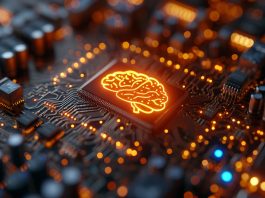Researchers at the University of Sydney, Dominic Williamson and Nouédyn Baspin, have developed an innovative new framework for managing quantum errors that could reshape the field of quantum computing.
Their theoretical model not only enhances the reliability of storing quantum information but also dramatically reduces the physical resources needed for generating ‘logical qubits,’ the computational units that drive quantum systems.
This advancement opens doors to a more compact and efficient form of quantum memory, or ‘quantum hard drive,’ with potential applications across various computing domains.
Overcoming quantum error correction barriers
In quantum computing, error correction is a major challenge due to the extreme sensitivity of quantum systems to external disturbances, which causes errors that can disrupt calculations.
Conventional quantum error correction methods require a large number of qubits (quantum bits) solely for error management, using up much of a quantum computer’s processing power to maintain stability and reduce the chances of data loss or corruption. This excessive use of qubits limits the resources available for actual computing tasks.
Dr Dominic Williamson, the lead researcher on the study and part of the University of Sydney’s Nano Institute and School of Physics, explained that the new architecture requires significantly fewer qubits for error suppression.
The result is a system that can allocate a greater portion of its qubits to computation rather than error control. With this efficiency, Williamson and Baspin’s model moves quantum computing closer to practical applications and strengthens its potential for high-performance calculations.
A novel three-dimensional approach
The study unveils a three-dimensional structural design that introduces a new paradigm for quantum error correction.
Unlike previous systems that correct errors in only one dimension within a 3D grid of qubits, this model enables error correction across two dimensions using the same 3D space.
This design shift means the new model can correct more errors with fewer qubits, representing a leap forward in the scalability of quantum systems.
Traditional 3D quantum error correction methods can only handle errors in a linear pattern, making them less efficient.
However, Williamson and Baspin’s architecture takes advantage of a unique qubit lattice arrangement that scales error correction capacity quadratically rather than linearly with the system’s dimensions.
This approach allows for a far greater number of errors to be addressed within the same physical space, representing a significant enhancement over previous error correction codes.
Toward scalable quantum computing with reduced physical qubits
As the field of quantum computing pushes toward practical, large-scale systems, the need for scalable quantum error correction methods becomes critical.
Current models often struggle with resource efficiency, as they require extensive qubit overhead that increases exponentially with system size.
Williamson and Baspin’s architecture presents a solution to this scaling issue by minimising the number of qubits necessary for error correction.
Their model’s compact design enables the construction of a quantum hard drive that could store substantial amounts of quantum data with greater reliability and efficiency.
Baspin, a PhD student and co-author of the study, highlighted the discovery of new quantum states within their three-dimensional structure, which exhibit properties not seen in previous quantum materials.
These states are integral to the functionality of the quantum error correction model and may have broader applications in quantum technology.
Implications for the future of quantum error correction and computing
Quantum computers have the potential to revolutionise problem-solving in fields such as cryptography, complex data analysis, and molecular simulation—areas that are beyond the reach of traditional computing methods.
However, reliable error correction is essential for achieving practical quantum computing. Williamson and Baspin’s research could help address this critical challenge, bringing scalable, resource-efficient quantum computing closer to reality.
Professor Stephen Bartlett, Director of the University of Sydney Nano Institute, sees this new approach as a transformative development that could make quantum computing accessible for real-world applications.
By making error correction more resource-efficient, this architecture paves the way for a new generation of quantum systems, offering benefits across fields that depend on high-speed, secure computing.








